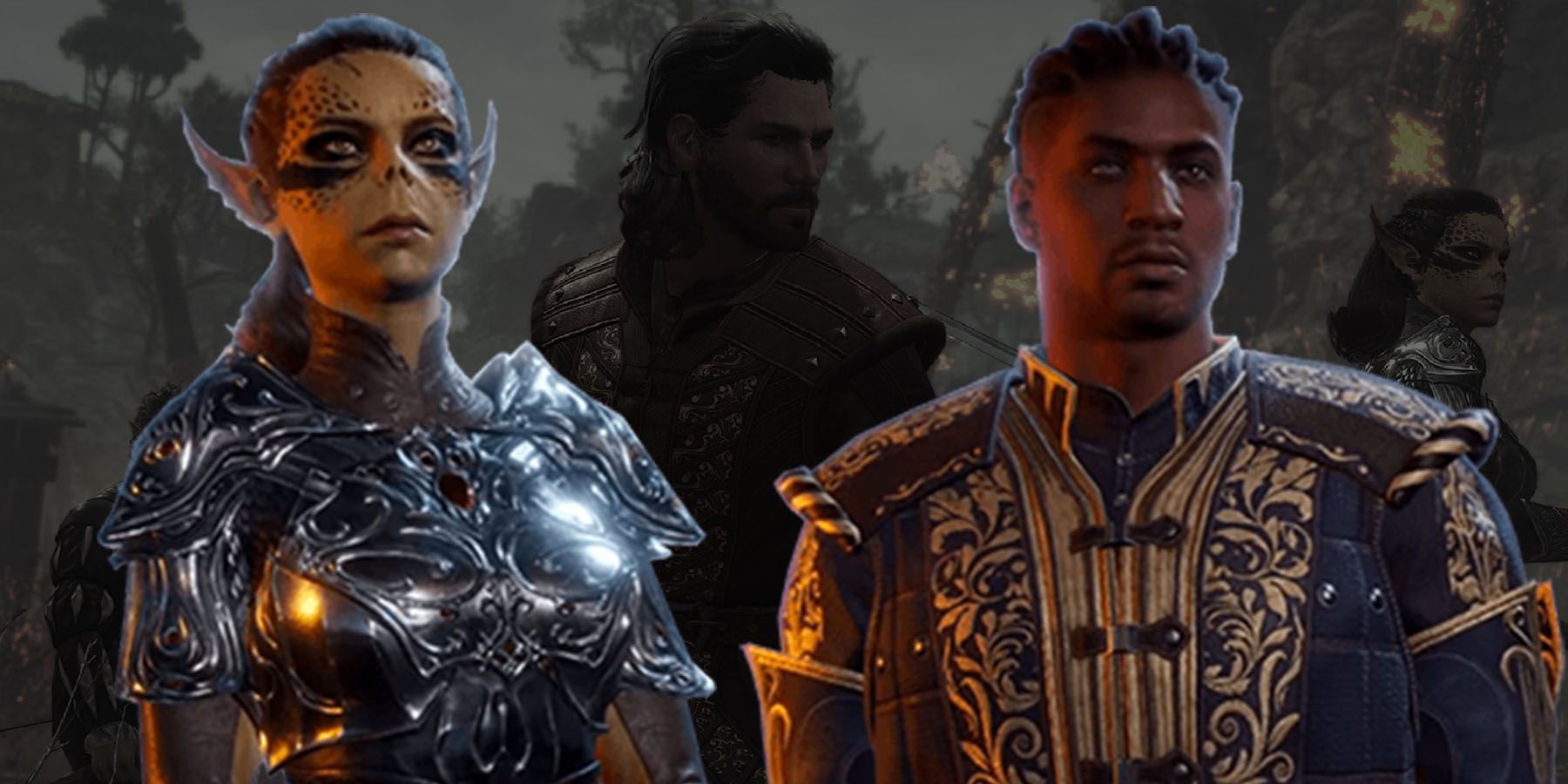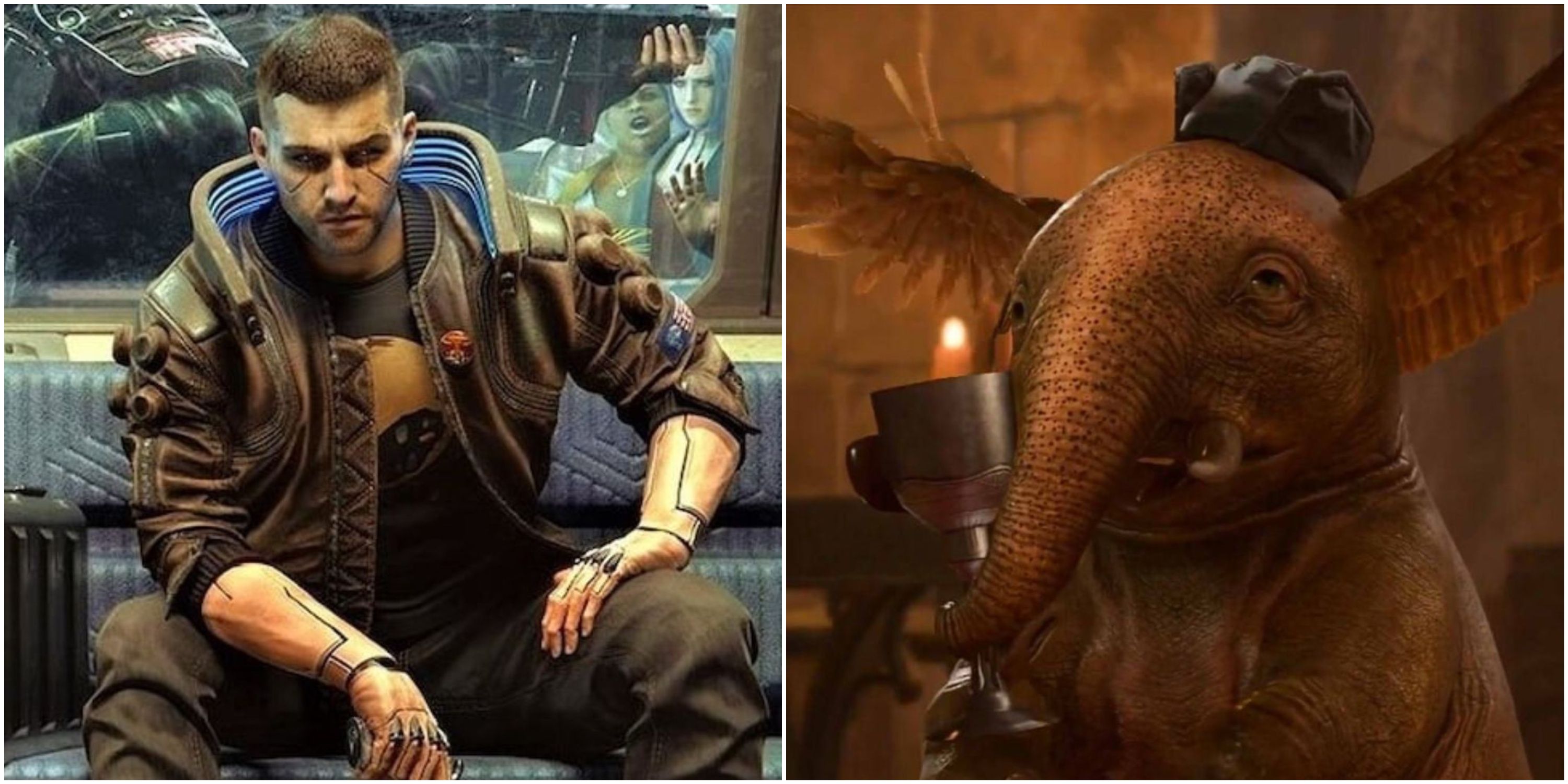Games
RPGs With the Most Flexible Skill Trees

Key Takeaways
Table of Contents
- Fallout: New Vegas offers a wide variety of perk choices for distinct playthroughs.
- Diablo 4 strikes a balance between Diablo 2 and 3 for versatile character builds.
- Like A Dragon: Infinite Wealth allows freedom in character building through a unique job system.
When players think about RPGs, they think about freedom of choice. Whether that’s decisions about how their character acts, customizing how they look, or tailoring what they can do in combat. Some RPGs choose to focus on one of these aspects over all others, while some offer more limited choices in each area.
Related
The Most Heartbreaking Decisions in RPGs
Hold back the tears, as the decisions could break even the steeliest of gamer hearts.
While they all have other strengths, the RPGs here all choose to put character-building in the hands of the player. The skill trees and skill systems in these games are a joy to behold, and each one allows players a wide range of branching choices to customize how they play their characters. These are the RPGs with gaming’s most flexible skill trees.
10 Fallout: New Vegas
S.P.E.C.I.A.L Little Guys
- Released
- October 19, 2010
Fallout‘s Perk system has always been a skill tree of sorts. It wasn’t laid out graphically like that until Fallout 4, but even before this, it was a branching system based on players’ stat and skill investments. One of the best examples of its variety is in Fallout: New Vegas.
New Vegas‘ iteration of this perk tree has a wide variety of choices, both useful and wacky, that can make fresh playthroughs feel vastly different. It’s not flexible in the sense that characters can change on the fly, but it is flexible enough to help players carve distinct stories with each new character.
9 Diablo 4
Buildcrafting Freedom
- Released
- June 6, 2023
- OpenCritic Rating
- Mighty
Diablo 4‘s skill trees might be the best example of a flexible skill tree in the series. They strike a balance between the action-oriented skills of Diablo 3 and the more intricate and customizable skill trees of Diablo 2. Skill points can be spent freely and refunded easily, making experimentation easy.
Players get a huge variety of choices in how to build a character, able to take moves from each category in the tree, or focus on one attack move and load up with defensive skills, for example. How players choose to invest in passive skills and moves makes a big difference to character builds, even though gear also plays an important part.
8 Like A Dragon: Infinite Wealth
Custom Classes
- Released
- January 26, 2024
- OpenCritic Rating
- Mighty
Like A Dragon: Infinite Wealth might seem like an odd choice since it doesn’t include traditional skill trees. Skills are unlocked by progressing characters in their chosen Jobs. Yet, the addition to this system of mixing and matching moves a character has learned when they swap Jobs means players have just as much freedom in character building as if each character had their own branching paths.
Jobs can seem confusing at first, given their unique nature, but players will soon find that they roughly fit into either support, healer, magic damage, or physical damage-focused roles. That means that hybrids can be powerful, like hard physical hitters that can also buff attacks and crits.

Related
8 Best JRPGs Where You Can Be Evil
These JRPGs let players take a walk down the darker side of the moral spectrum, giving them the option to do an evil playthrough of the story.
Alternatively, players can create magic characters that can hit any enemy weakness, or jack-of-all-trades builds that can throw out heals or damage as needed. The only downside is the time investment needed for leveling up various Jobs.
7 Skyrim
A Constellation Of Skills
Skyrim‘s skill trees are burnt into the minds of many gamers, the mere mention of it conjuring to mind the image of the Auroral sky behind constellation-like skill trees. The “level up what you use” approach to skill building means that players can make their chosen build viable with enough time investment.
Admittedly, players have a habit of falling back on their go-to-builds like the Stealth Archer, but that doesn’t mean that the variety isn’t there. There aren’t too many other games that let players fully spec into being a blacksmithing alchemist, after all.
6 Salt & Sanctuary
The Dark Souls Of Skill Trees
Salt and Sanctuary
- Developer(s)
- Ska Studios
- Publisher(s)
- Ska Studios
- OpenCritic Rating
- Strong
The massive skill tree of Salt & Sanctuary is both intricate and interesting. It essentially takes the level requirement system from its Soulslike inspiration and translates that into skill tree form. This is how players level their weapon skills, how they get more healing, and how they specialize in magic if they choose.
This makes leveling up feel inherently valuable in Salt & Sanctuary, as the skill tree ends up defining how a character is built. There are tough choices to make, and no hope of filling out the hundreds of nodes available. Pre-planning skill investments are vital to making characters that stay viable throughout the game. Re-specing is possible, but characteristically tough.
5 Baldur’s Gate 3
Following A Solid Template
- Released
- August 3, 2023
- OpenCritic Rating
- Mighty
Dungeons & Dragons has inspired so many games’ character classes and skill sheets that it’s tough to keep count. Few games have translated the tabletop ethos of flexible character building into video game form as well as Baldur’s Gate 3, though.
4:04

Related
Baldur’s Gate 3: Strongest Companions, Ranked
To build optimized parties in BG3, strong companions are often part of the formula. Consequently, here are the game’s strongest companions.
While character building in the game can be a little intimidating for newcomers, D&D enthusiasts will welcome the ability to dip into other classes when leveling, creating multi-class hybrids. Not every feature from the tabletop ruleset is recreated, characters are capped at level 12 and there are a few subclasses that missed out. Even so, it’s still by far the best interpretation of D&D skill trees in a game.
4 Nioh 2
Deep And Complex
Despite making great strides in adding readability and fun factor over the first Nioh game, many aspects of Nioh 2 can still feel a little obtuse. The skill trees are a prime example of this, but what seems complex and dense at first can be a very versatile system once players get to grips with it.
There are trees for each weapon type, trees for the characters’ core skills, and trees for both Ninjutsu (techniques) and Onmyo (Magic). Players earn points for each category of tree separately, too. Yes, it’s a confusing system, but it’s also one that lets players hone in on their preferred playstyle and augment it as they go.
3 Final Fantasy 12: The Zodiac Age
A Second Chance For The Skill System
Final Fantasy XII: The Zodiac Age
- Released
- July 11, 2017
- OpenCritic Rating
- Mighty
Most games don’t get a second chance at creating a truly enjoyable skill tree or progression system. Still, that’s exactly what Final Fantasy 12 did with its re-release, The Zodiac Age. Aimed almost entirely at addressing players’ criticisms over the job board and license system, The Zodiac Age completely reworked how building characters and obtaining skills functioned.
The result was a much more flexible system that gives players a lot of freedom over how they want to build a character while streamlining the process of actually acquiring skills. The fact that the game does this while still maintaining the tight, tactical, nature of the hybrid turn-based combat is a testament to The Zodiac Age being a fantastic remake.
2 Grim Dawn
Hybrid Classing
Grim Dawn
Rarely in an ARPG has multi-classing felt as satisfying and viable as in Grim Dawn. That’s mostly thanks to some expertly carved skill trees that offer a huge number of class combinations and numerous synergies to be discovered.
The game signposts the multi-classing option from the get-go and makes it clear to the player that this is something to be encouraged and experimented with. The skill points system, which makes players choose between investing in core class stats or boosting skills with each point, leads to some interesting decision-making in character building.
1 Path of Exile
Skill Forest
- Released
- October 23, 2013
Path of Exile‘s skill tree might be the most expansive web of passive buffs ever seen in a game. Nodes range from minor stat buffs to game-changing effects that define a build. Planning out a route is vital to avoid getting lost and making non-viable characters.
Even though it can be intimidating, it offers unparalleled flexibility. All characters start at different points of the same grid, so all nodes are theoretically available to build towards. Of course, there are more effective ways to build certain characters, but that’s where the fun of buildcrafting comes in.
Path of Exile offers a ridiculous amount of variety for players who love crafting a character build, but there are also plenty of build calculators and guides out there for players who don’t want to spend their game in a skill menu. Dipping into a season can offer players the best of both worlds.

More
8 Best RPGs That Challenge Traditional Morality Systems
Not all morality systems in RPGs are black-and-white. Here are some of the best that aim to challenge the concept.
-

 Movies4 weeks ago
Movies4 weeks agoColman Domingo Propels Phenomenally Entertaining “The Madness” | TV/Streaming
-

 Games3 weeks ago
Games3 weeks agoDestiny 2 Weekly Reset: New Nightfall, Challenges, and Rewards
-

 Games4 weeks ago
Games4 weeks agoStar Wars: Skeleton Crew's Showrunner Clarifies Confusion Caused By That Line From The Trailer
-

 Games4 weeks ago
Games4 weeks agoStalker 2: Should You Give Ward Sensors To Richter Or Captain Zotov?
-

 Games4 weeks ago
Games4 weeks agoMonopoly GO: How To Get More Flags For Harvest Racers
-

 Games3 weeks ago
Games3 weeks agoPokemon Fan Shares Interesting Substitute Evolution Concept
-

 Movies4 weeks ago
Movies4 weeks agoHome Entertainment Guide: November 2024 | DVD/Blu-Ray
-

 Games3 weeks ago
Games3 weeks agoXbox Game Pass Reveals December 2024 Wave 1 Lineup











